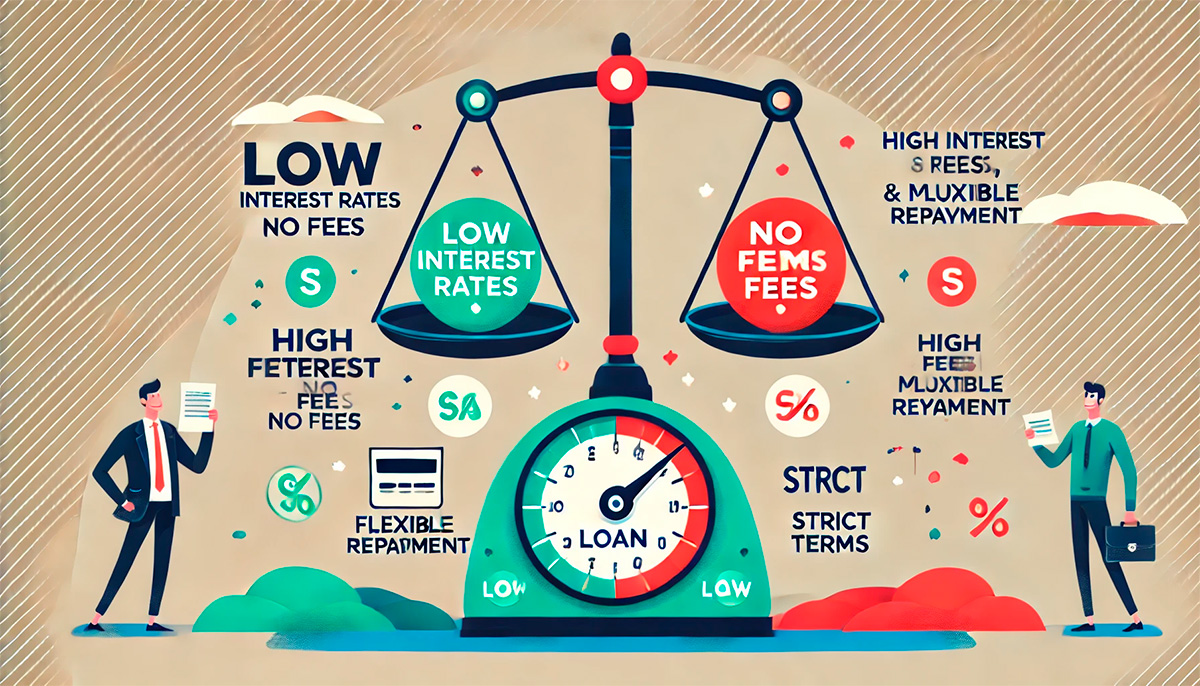When it comes to borrowing money, whether for a home, car, education, or personal expenses, comparing loan offers from different banks is a critical step. Not all loans are created equal, and the terms you agree to can have a significant impact on your financial health. Choosing the right loan can save you thousands of dollars in interest and fees, while the wrong choice can lead to unnecessary financial strain. This article will guide you through the process of comparing loan offers from different banks correctly, ensuring you make an informed decision.
Why Comparing Loan Offers Matters
Banks and financial institutions offer a wide range of loan products, each with its own interest rates, fees, and terms. Without careful comparison, you might end up paying more than necessary or agreeing to unfavorable conditions. Comparing loan offers allows you to identify the most cost-effective and flexible option that aligns with your financial goals. It also helps you avoid hidden fees and understand the full cost of borrowing.
Key Factors to Compare When Evaluating Loan Offers
To compare loan offers effectively, you need to look beyond the surface-level details and examine the finer points of each offer. Here are the key factors to consider:
1. Interest Rates
The interest rate is one of the most critical factors in determining the cost of a loan. It directly affects your monthly payments and the total amount you will repay over the life of the loan. Banks typically offer two types of interest rates: fixed and variable. Fixed rates remain constant throughout the loan term, providing predictability, while variable rates can fluctuate based on market conditions, potentially leading to lower or higher payments over time.
When comparing interest rates, always look at the Annual Percentage Rate (APR), which includes both the interest rate and any additional fees. The APR provides a more accurate representation of the loan’s true cost.
2. Loan Terms
Loan terms refer to the length of time you have to repay the loan. Shorter terms usually come with higher monthly payments but lower overall interest costs, while longer terms reduce monthly payments but increase the total interest paid. Consider your financial situation and choose a term that balances affordability with the total cost of the loan.
3. Fees and Charges
Banks often charge various fees that can significantly increase the cost of a loan. Common fees include origination fees, application fees, prepayment penalties, and late payment fees. Be sure to ask for a detailed breakdown of all fees associated with each loan offer and factor them into your comparison.
4. Repayment Flexibility
Some loans offer more flexibility in repayment options, such as the ability to make extra payments or adjust the payment schedule. This can be particularly useful if you anticipate changes in your financial situation. Look for loans that allow you to pay off the loan early without penalties, as this can save you money on interest.
5. Customer Service and Support
The quality of customer service can make a big difference in your loan experience. Consider the bank’s reputation for customer support, including their responsiveness, availability, and willingness to address concerns. Reading reviews and asking for recommendations can help you gauge the level of service you can expect.

How to Compare Loan Offers Step-by-Step
Now that you know what to look for, here’s a step-by-step guide to comparing loan offers from different banks:
Step 1: Gather Loan Offers
Start by collecting loan offers from at least three to five banks. You can do this by visiting bank websites, contacting loan officers, or using online comparison tools. Be sure to provide the same information (e.g., loan amount, purpose, and credit score) to each bank to ensure a fair comparison.
Step 2: Create a Comparison Table
Organize the information in a table to make it easier to compare the offers side by side. Here’s an example of what your table might look like using real American banks:
| Bank | Interest Rate (APR) | Loan Term | Fees | Repayment Flexibility | Customer Service Rating |
|---|---|---|---|---|---|
| Chase Bank | 5.5% | 5 years | $200 origination fee | Allows extra payments | 4.5/5 |
| Bank of America | 6.0% | 7 years | $150 application fee | No prepayment penalties | 4.0/5 |
| Wells Fargo | 5.0% | 10 years | $300 origination fee | Fixed payments only | 3.5/5 |
Step 3: Calculate the Total Cost
Use a loan calculator to determine the total cost of each loan, including interest and fees. This will give you a clear picture of how much you will pay over the life of the loan and help you identify the most cost-effective option.
Step 4: Evaluate Repayment Flexibility
Consider how each loan’s repayment terms align with your financial goals. If you plan to pay off the loan early, look for offers with no prepayment penalties. If you prefer lower monthly payments, a longer loan term might be more suitable.
Step 5: Assess Customer Service
Research each bank’s customer service reputation and read reviews from other borrowers. A bank with excellent customer support can make the loan process smoother and help you resolve any issues quickly.
Common Mistakes to Avoid
When comparing loan offers, it’s easy to make mistakes that can cost you money or lead to unfavorable terms. Here are some common pitfalls to avoid:
- Focusing Only on Interest Rates: While interest rates are important, they don’t tell the whole story. Be sure to consider fees, loan terms, and repayment flexibility.
- Ignoring the Fine Print: Always read the loan agreement carefully to understand all terms and conditions, including hidden fees and penalties.
- Not Checking Your Credit Score: Your credit score plays a significant role in the interest rate and terms you qualify for. Check your score before applying and take steps to improve it if necessary.
- Overlooking Customer Service: A bank with poor customer service can make the loan process frustrating and stressful. Don’t underestimate the importance of good support.
Conclusion: Make an Informed Decision
Comparing loan offers from different banks is a crucial step in securing the best deal for your financial needs. By focusing on key factors such as interest rates, fees, loan terms, and customer service, you can make an informed decision that saves you money and aligns with your goals. Remember to avoid common mistakes and take the time to thoroughly evaluate each offer.
With the right approach, you can confidently choose a loan that meets your needs and sets you on the path to financial success. Whether you’re buying a home, financing a car, or covering personal expenses, a well-chosen loan can make all the difference.




